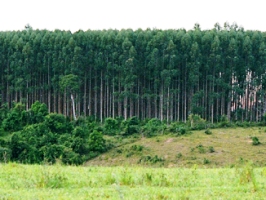 The grass is greener on the other side: deleveraging from the declining graphics industry
The grass is greener on the other side: deleveraging from the declining graphics industry
In a mature commodity market where demand is in decline, capacity management is the key to preserving margins. Capacity management has not been enough to avoid the steady decline in profitability in the graphics industry, at least not in the magnitude and timing we have seen lately, as the continued declines in demand are washing away all the benefits from closures in a matter of months, if no further changes are seen. In addition to the overcapacity dilemma, steady increases in production costs are also a main cause for the margin squeeze since the start of the new millennium, resulting in the current record-low profitability level in all graphic grades.
Casualties are starting to appear, with the most relevant being the closure of the Aylesford mill in the UK. But paper producers are not the only ones suffering, as paper merchants are also struggling to survive unscathed. The recent default of PaperlinX in the UK and the Benelux region is a clear example of that.
But capacity management does not necessarily mean closures. Several mills and companies have recently exited the graphic paper business in favor of other paper and board grades or other products. Toward the end of 2014 UPM announced significant changes, resulting in the removal of more than 800,000 tonnes of printing & writing capacity. Some of the closures were motivated by the specific assets' poor cost positioning, but in other cases, such as UPM's Kaukas PM2, the idling followed a strategic move to dedicate the resources of the mill to higher margin products, like market pulp. Conversion to other paper and board segments such as packaging papers, specialty or even tissue have also been popular. Lecta continues to convert more of its capacities to specialty paper, while Sappi has strengthened its market position in the specialty packaging papers with the conversion of Alfeld PM2 and the production start of the folding boxboard brand Atelier at its Maastricht mill.
The divestment and further conversion of Nijmegen mill, although not a Sappi mill anymore, represents a significant conversion this year. Further conversions have already been announced, with the two most relevant being the conversion of Stora Enso's Varkaus mill to lightweight virgin containerboard and the shift of Metsa-Board's Husum mill to packaging. Husum will cease to produce a wide range of graphic papers and focus mainly on the uncoated woodfree and coated graphic grades. With the conversion of Husum, Metsa-Board has completely exited the graphic industry and will start producing about 300,000 tonnes of bleached virgin linerboard and some 400,000 tonnes of folding boxboard.
Resumen
La hierba es más verde en el otro lado: el desapalancamiento de la industria gráfica en declive
En un mercado de materias primas maduro donde la demanda está en declive, gestión de la capacidad es la clave para la preservación de los márgenes. Gestión de la capacidad no ha sido suficiente para evitar la constante disminución de la rentabilidad en la industria gráfica, al menos no en la magnitud y el momento hemos visto últimamente, ya que las disminuciones continuas en la demanda son el lavado de distancia de todas las ventajas de los cierres en cuestión de meses , si no se observan cambios adicionales. Además del dilema exceso de capacidad, un aumento constante de los costos de producción son también una causa principal de la compresión de márgenes desde el inicio del nuevo milenio, lo que resulta en el nivel de rentabilidad bajo record actual en todos los grados gráficos. Las víctimas están comenzando a aparecer, siendo los más relevantes el cierre de la fábrica de Aylesford en el Reino Unido. Pero los productores de papel no son los únicos que sufren, como comerciantes de papel también están luchando para sobrevivir ileso. La reciente por defecto de PaperlinX en el Reino Unido y la región del Benelux es un claro ejemplo de ello.
RISI - USA - 20 abril 2015
The grass is greener on the other side: deleveraging from the declining graphics industry
- Detalles
- Categoría: El mundo
- Visto: 990
